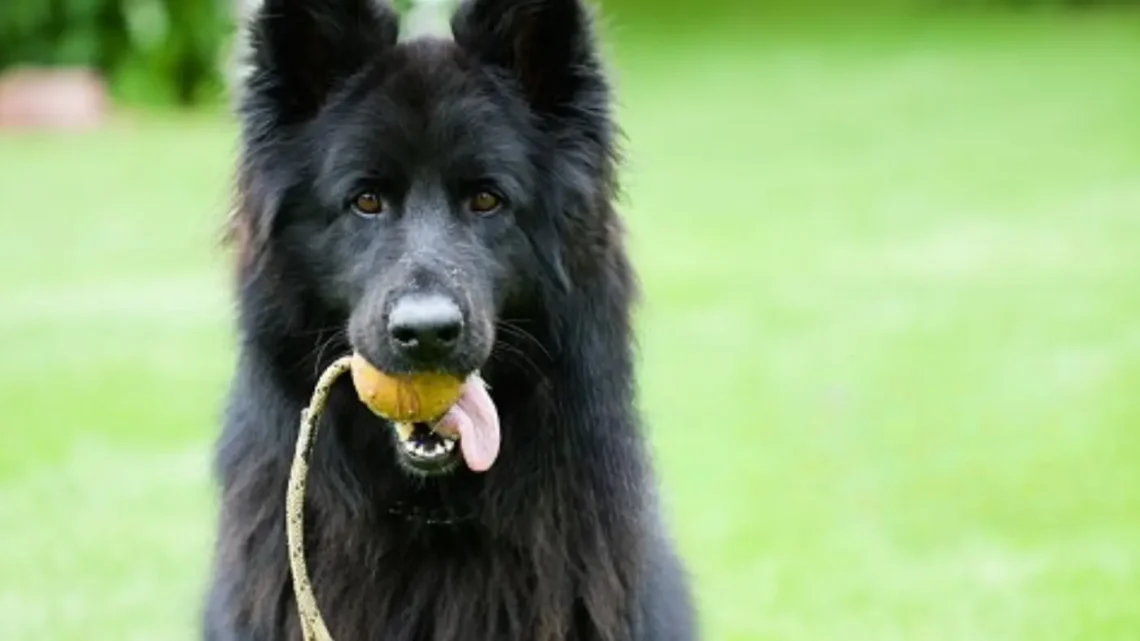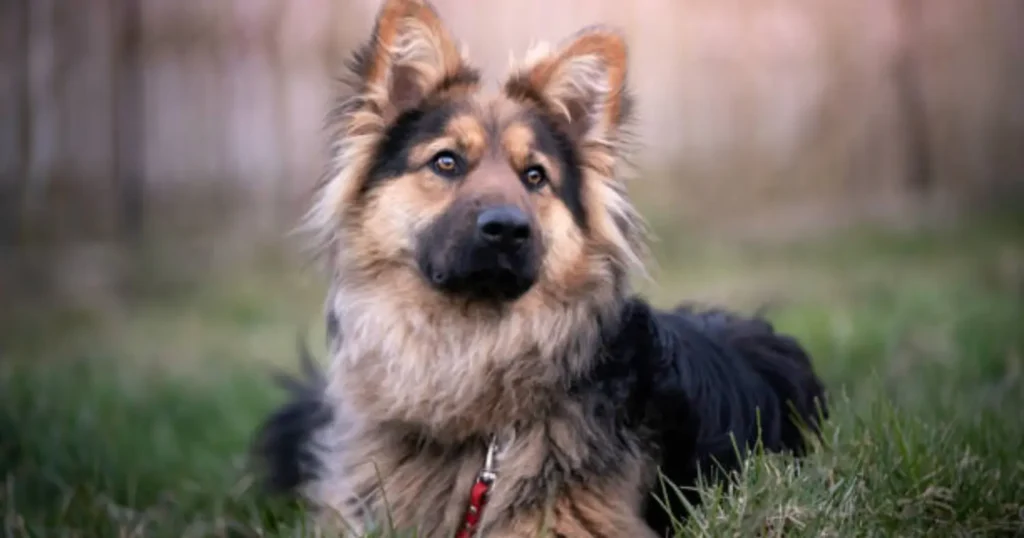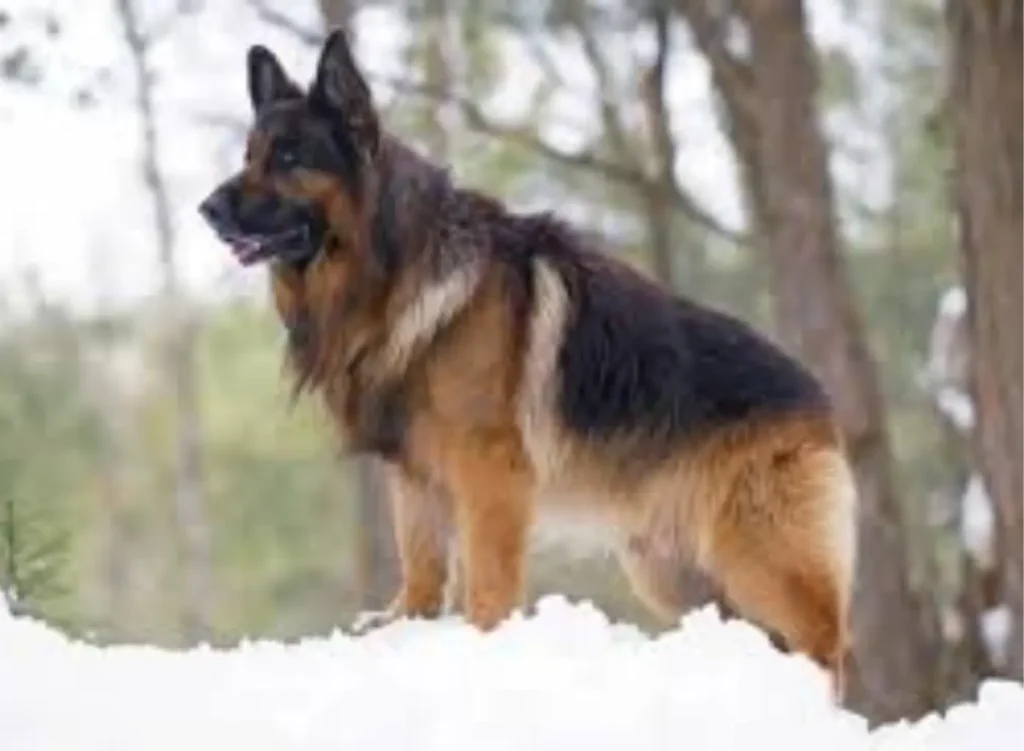
Long-Haired German Shepherd: Traits, Care, and Health Tips for Your Perfect Pet
What is a Long-Haired German Shepherd?
A long-haired German Shepherd is a unique variation of the standard German Shepherd, renowned for its beautiful, flowing coat. Unlike the more common short-haired German Shepherd, these dogs have a longer, thicker fur coat that gives them a more striking appearance. Their coat can be wavy or straight, covering their body in a way that makes them stand out. While short-haired German Shepherds are known for their sleek, practical look, long-haired ones have a more luxurious, sometimes wild appearance.
But it’s not just the looks that set them apart. Long-haired German Shepherds often have a different temperament, influenced by their genetics and the need for extra grooming care. They still share the same intelligence, loyalty, and protective nature, but with the added responsibility of maintaining their gorgeous, long fur. In this article, we’ll explore what makes these dogs so special, from their physical traits to their unique needs as pets.
What Causes a German Shepherd to Have Long Hair?
So, why do some German Shepherds sport a long, luxurious coat while others have the short, sleek fur that’s more common? The answer lies primarily in genetics, but there are a few other factors at play as well.
Genetic Influence
The main reason a German Shepherd ends up with a long coat is simply genetics. Long hair in German Shepherds is caused by a recessive gene. This gene must come from both parents for the puppies to inherit the long-haired trait. In other words, both the mother and father need to carry the long-haired gene, even if they themselves are short-haired. So, it’s not just a random trait—it’s a family affair.
Breeding Practices
Breeding also plays a role. While genetic factors dictate whether a German Shepherd will have long hair, responsible breeding practices ensure that these dogs are well cared for and their coat quality is maintained. Breeders who specialize in long-haired German Shepherds will carefully select dogs that carry the right genetic traits, leading to a higher likelihood of puppies with the long, flowing coat.
Rare but Possible: Other Environmental Factors
Though genetics are the dominant factor, some dogs may experience changes in their coat due to environmental stress or health issues. For instance, hormonal imbalances or certain conditions could cause hair growth to be more pronounced. However, this is far less common and usually temporary.
In short, long-haired German Shepherds are born with this trait due to specific genetic inheritance, and breeders focus on maintaining these traits through careful selection.

What Are the Key Characteristics of a Long-Haired German Shepherd?
Long-haired German Shepherds stand out in a crowd, and not just because of their beautiful coat. Their physical traits and the way their fur influences their behavior make them unique among other shepherd breeds.
What Physical Traits Distinguish a Long-Haired German Shepherd?
- Coat: Obviously, the most noticeable feature is the long coat. It’s thick and dense with a soft undercoat and longer, more flowing outer fur. The mane around their neck is especially striking.
- Color: Like their short-haired cousins, long-haired German Shepherds come in various colors, such as black and tan, sable, or combinations. Their fur adds depth to these colors, making them look more vibrant and textured.
- Size and Build: Physically, they are similar to other German Shepherds—muscular, medium to large-sized, with a strong, athletic build. Their fur doesn’t hinder their agility, but it might give them a more regal, majestic look.
How Does the Coat Affect Their Behavior and Interactions?
The long coat doesn’t really change their core temperament, but it does affect how they interact with their environment and their owners. For instance:
- Grooming Needs: They require regular grooming to avoid mats and tangles, which can affect their comfort and mood. If neglected, they might get cranky or stressed.
- Heat Sensitivity: Their thicker coat can make them more sensitive to hot weather. They might be less inclined to spend time outdoors during summer or warmer months.
- Appearance Impact: The long coat adds a touch of elegance and even gives them a more serious, protective appearance. It can make them look intimidating at first, but underneath, they remain the same friendly, loyal companions that German Shepherds are known for

What Are the Grooming and Care Requirements for a Long-Haired German Shepherd?
If you’re thinking about getting a long-haired German Shepherd, be ready for grooming! These dogs have gorgeous, thick coats, but they need regular care to stay healthy and mat-free.
How Often Should Grooming Be Done?
- Daily Brushing: Ideally, you should brush your long-haired German Shepherd every day. Sounds like a lot? It is, but it’s crucial to prevent mats and tangles. Plus, it keeps their coat shiny and healthy.
- Bathing: They don’t need frequent baths—just every 6-8 weeks or when they get especially dirty. Over-bathing can strip their coat of natural oils, which can lead to dryness or skin irritation.
Which Tools Are Most Effective for Grooming?
- Slicker Brush: This is your go-to tool for removing tangles and loose fur. It helps reach deep into the coat without irritating their skin.
- Undercoat Rake: Perfect for getting through that dense undercoat. It helps reduce shedding and prevents mats from forming in the undercoat.
- De-shedding Tools: During shedding seasons (spring and fall), a de-shedding tool can help manage the extra fur they leave behind.
What Special Care Does the Coat Require to Stay Healthy?
- Regular Grooming: To keep that beautiful coat healthy, daily brushing is essential. This also helps with blood circulation and skin health.
- Hydration: Make sure your dog is drinking enough water. Dehydration can cause the coat to become dry and brittle.
- Healthy Diet: A well-balanced, omega-rich diet supports skin health and coat condition. Adding fish oil supplements can also boost the coat’s shine and softness.
- Clipping: Occasionally, you might need to trim the fur around their paws or ears to keep it looking neat, but avoid cutting the overall coat length.
In short, long-haired German Shepherds are high-maintenance when it comes to grooming, but it’s worth it for that stunning coat. Stick to a regular routine with the right tools, and they’ll be as comfortable as they are gorgeous.

What Are the Benefits and Challenges of Owning a Long-Haired German Shepherd?
Owning a long-haired German Shepherd can be a rewarding experience, but like any dog, it comes with both perks and challenges. Here’s a no-nonsense look at what you can expect.
Advantages of Owning a Long-Haired German Shepherd

- Stunning Appearance: Their luxurious, flowing coat is eye-catching. People will stop and stare, and your dog will definitely turn heads wherever you go.
- Great Family Companion: Long-haired German Shepherds still have the same loyal, intelligent nature as short-haired ones. They’re protective, loving, and excellent with families, including kids.
- Weather Protection: The thick coat provides extra protection against the cold. If you live in a colder climate, they handle chilly weather a bit better than their short-haired counterparts.
- Unique Personality: Many owners report that long-haired Shepherds seem to have a slightly more calm and easy-going personality, which can be a nice bonus if you’re looking for a slightly more laid-back dog.
Challenges of Owning a Long-Haired German Shepherd
Health Concerns: While long-haired German Shepherds generally share the same health profile as short-haired ones, their dense coat can sometimes trap moisture or cause skin irritations if not properly maintained.
High Grooming Needs: As we’ve discussed, that gorgeous coat requires daily brushing to prevent tangles and mats. If you’re not a fan of grooming, this can quickly become a chore.
Shedding: They shed a lot, especially during seasonal changes. You’ll need to vacuum often, or you’ll be swimming in fur.
Heat Sensitivity: Their thick coat can make them more sensitive to heat. In warmer climates, you may find them less inclined to spend time outdoors, and you’ll need to take extra care to keep them cool in the summer.

How Does a Long-Haired German Shepherd’s Coat Impact Its Health?
A long-haired German Shepherd looks stunning with its thick, flowing coat, but that fur comes with some health considerations. Let’s break down how it affects their well-being and comfort.
Health Concerns Linked to the Long Coat
- Skin Irritations and Infections: The dense coat can trap moisture, leading to skin issues like hot spots or bacterial infections. Without proper grooming, dirt and moisture can get trapped under the fur, causing irritation or even rashes.
- Matting and Tangles: If not regularly brushed, the fur can become matted, which can tug on their skin, causing discomfort or even abrasions. Mats can also block airflow to the skin, leading to heat rashes or other irritations.
- Parasites: Fleas, ticks, and other parasites love long fur. Regular grooming is essential to spot and remove any pests before they cause bigger issues.
How the Coat Affects Comfort in Different Environments
- Cold Weather: The long coat actually helps protect against the cold. It provides an added layer of insulation, which is great if you’re in a chillier climate. However, it’s still important to monitor your dog in freezing temperatures, as prolonged exposure can lead to frostbite or discomfort.
- Hot Weather: The thick fur can make them more prone to overheating in warmer climates. During hot months, you’ll need to be extra cautious about keeping your dog cool. They may be less inclined to exercise in the heat and will need access to shade, fresh water, and cool resting areas. It’s a good idea to trim around sensitive areas like the paws or ears to keep them more comfortable.
How Does a Long-Haired German Shepherd Compare to a Short-Haired German Shepherd?
So, what’s the deal between the long-haired German Shepherd and the more common short-haired German Shepherd? While both are loyal, intelligent, and protective, there are a few key differences that set them apart. Let’s dive into the physical traits and temperament of both.
Key Differences in Physical Traits
Coat Length & Texture:
- Long-Haired: The obvious one. They have a thick, long coat that’s soft, dense, and often wavy or straight.
- Short-Haired: Their coat is much shorter, sleek, and closer to the skin. They still shed but not as much, and grooming is far less involved.
Maintenance:
- Long-Haired: Requires daily brushing to prevent tangles and mats. Bathing happens less often but still necessary for coat health.
- Short-Haired: Far less upkeep. A weekly brush should do the trick, and baths are less frequent. Their coat sheds less significantly, too.
Body Shape:
- Long-Haired: The thicker coat gives them a more voluminous look. They may appear bulkier around the neck and chest.
- Short-Haired: Their sleek appearance is more streamlined and athletic.
Key Differences in Temperament
Personality:
- Long-Haired: Some owners claim long-haired German Shepherds tend to be a bit more laid-back. They still have that guarding instinct, but their calmer demeanor might make them slightly more approachable.
- Short-Haired: These guys are known to be a little more energetic and sometimes even more intense in their protective nature. If you’re looking for a dog with high stamina, a short-haired one might be your choice.
Behavior with Others:
- Both types are equally loyal and protective. However, long-haired German Shepherds might be slightly more social with other animals and strangers due to their calm temperament, while short-haired ones may show more reserved behavior until they get to know people or other pets.
What Are the Training Considerations for a Long-Haired German Shepherd?
Training a long-haired German Shepherd doesn’t differ drastically from training any other German Shepherd, but there are a few things to keep in mind. These dogs are smart, eager to please, and sometimes a little stubborn. Let’s dive into the training considerations you should know.
Are There Specific Training Strategies for Managing the Behavior of Long-Haired German Shepherds?
- Consistency is Key:
Like all German Shepherds, they thrive on routine and clear boundaries. A long-haired German Shepherd will respond well to consistent commands and regular training sessions. They can be a bit stubborn, so firm yet positive reinforcement is crucial. - Early Socialization:
Socializing your dog early is essential, especially with long-haired German Shepherds. Due to their natural protective instincts, they might be wary of strangers or other animals. Expose them to different people, pets, and environments while they’re young to ensure they’re well-rounded adults. - Mental Stimulation:
These dogs are highly intelligent and need mental challenges. Incorporate obedience training, puzzle toys, and activities like agility courses into their routine. A long-haired German Shepherd can get bored quickly and may resort to undesirable behaviors if they aren’t mentally stimulated. - Exercise & Physical Activity:
They have a lot of energy! These dogs were originally bred for work, so they need plenty of physical exercise. Long walks, playtime, and even some obedience drills will help burn off that energy. A tired dog is a well-behaved dog. - Patience with Grooming:
Grooming isn’t just about keeping them looking good—it’s also an opportunity to reinforce bonding and obedience. Start brushing their fur early so they get used to it. Reward them with treats for staying calm and cooperative during grooming sessions.
How to Choose the Right Long-Haired German Shepherd from a Breeder or Shelter?

Choosing a long-haired German Shepherd is a big decision. Whether you’re buying from a breeder or adopting from a shelter, there are a few key things to look for to ensure you’re making the right choice. Let’s break it down.
What Should You Look for When Selecting a Long-Haired German Shepherd?
- Temperament:
- When selecting a long-haired German Shepherd, first assess its temperament. You want a dog that’s friendly, curious, and interacts well with people. They should be social, not overly fearful or aggressive.
- Coat Condition:
- Check the coat for signs of good health. It should be shiny, not dry or matted. A healthy coat indicates proper care, while excessive matting or poor coat condition might suggest neglect or improper breeding.
- Eyes and Ears:
- Healthy eyes should be clear, without discharge or cloudiness. Similarly, their ears should be clean, with no signs of infection. A long-haired German Shepherd’s ears can trap moisture, making them more susceptible to infections if not cared for properly.
- Activity Level:
- Observe the dog’s energy and enthusiasm. A long-haired German Shepherd should be active and engaged. If the dog seems lethargic or disinterested, it could be a red flag.
Are There Breed-Specific Health Tests You Should Inquire About?
- Hip and Elbow Dysplasia:
- This breed can be prone to joint issues like hip and elbow dysplasia. Ask the breeder or shelter if the parents have been screened for these conditions. Certified hip and elbow exams can save you from costly vet bills later.
- Degenerative Myelopathy (DM):
- Degenerative Myelopathy is a progressive disease affecting the spinal cord. It’s important to inquire if the breeder conducts DM screening for their breeding dogs. While there is no cure, knowing early can help with care planning.
- Eyesight and Coat Health:
- Ask about the dog’s lineage and whether the parents have been tested for any eye conditions, such as progressive retinal atrophy (PRA). Coat health issues might also arise from inherited conditions, so confirming a clean bill of health in this area is crucial.
- General Health History:
- Request detailed health records from the breeder or shelter. Look for vaccinations, deworming schedules, and any prior health issues. A responsible breeder or shelter will have full transparency.
How to Feed and Nourish a Long-Haired German Shepherd
A long-haired German Shepherd isn’t just a pretty face—they need the right nutrition to maintain their beautiful coat and overall health. Let’s break down how to keep them well-fed and nourished.
Does the Long Coat Require Special Dietary Considerations for Maintaining Its Health and Appearance?
Focus on Omega Fatty Acids:
- To keep their coat shiny and healthy, you need to feed them a diet rich in omega-3 and omega-6 fatty acids. These essential fats promote skin health and help prevent dryness or flakiness in the coat. Look for high-quality fish oil, flaxseed, or salmon in their food.
Protein for Coat Strength:
- The protein in their diet is also crucial for a strong, healthy coat. Choose a high-protein dog food with real meat, like chicken, turkey, or lamb. Protein helps with hair growth and overall coat quality.
Biotin and Zinc:
- Biotin (a type of vitamin B) and zinc are essential for healthy fur and skin. Look for a food that contains these nutrients or consider adding a supplement to ensure they’re getting enough.
Avoid Overfeeding:
- It’s easy to overfeed with those puppy dog eyes, but maintaining a healthy weight is important for your dog’s overall health, including their skin and coat. Follow feeding guidelines based on their age, size, and activity level.
Hydration:
- Never underestimate the power of water! Proper hydration keeps their skin moisturized and supports healthy coat growth. Always have fresh water available, especially if you’re feeding dry kibble.
Are Long-Haired German Shepherds a Good Fit for Families and Other Pets?
A long-haired German Shepherd can make a fantastic family companion, but it’s important to know what you’re getting into. Let’s look at their temperament and how well they fit into a family with kids and other pets.
What is Their Temperament Like with Children and Other Animals?
With Children:
- These dogs are loyal and protective, making them excellent family pets. They’re naturally cautious around young children but tend to be very affectionate once they feel comfortable. They’re generally gentle, but their size and energy can sometimes overwhelm small kids. Always supervise interactions, especially in the early days.
With Other Pets:
- Long-haired German Shepherds tend to get along well with other pets, especially if socialized early. Their protective nature means they may be wary of new animals at first, but they’re typically not aggressive. Early introduction and consistent training can help them live peacefully with other dogs or even cats.
How Adaptable Are They to Family Environments?
Active Family Lifestyles:
- These dogs thrive in active households. If your family enjoys outdoor activities like hiking, running, or playing fetch, a long-haired German Shepherd will love it. They have plenty of energy and need a family that can match their pace.
Quiet Homes:
- On the flip side, if your household is quieter or more sedentary, these dogs might struggle with boredom. Their need for mental and physical stimulation means they may become restless or destructive if they’re not engaged enough.
Training and Structure:
- They do best in homes with a clear routine. Consistency and structure help them feel secure. They’re great learners and will quickly adapt to your family’s lifestyle as long as training is firm and fair.
What Are Some Common Misconceptions About Long-Haired German Shepherds?
There are plenty of misconceptions about long-haired German Shepherds that can cloud people’s judgment. Let’s clear up some of the most common myths surrounding these beautiful dogs.
What Myths About Long-Haired German Shepherds Should Be Addressed?
They’re Less Intelligent Than Short-Haired German Shepherds:
This is absolutely untrue. Long-haired German Shepherds are just as intelligent, loyal, and trainable as their short-haired counterparts. The only difference is their coat! They still excel in obedience, protection, and even working roles. Intelligence is not tied to coat length.
They’re High-Maintenance and Hard to Care For:
While it’s true they need regular grooming, long-haired German Shepherds aren’t as high-maintenance as some people think. With daily brushing, they stay healthy and comfortable. It’s more about commitment than difficulty. Plus, their beautiful coat doesn’t require as much care as, say, a Persian cat’s.
Long-Haired Means Less Healthy:
Some people think that long-haired German Shepherds are prone to more health problems due to their coat. This isn’t necessarily true. As long as they’re groomed regularly and kept healthy, they’re just as robust as short-haired versions. It’s more about genetics and proper care than the coat length.
They’re Less Protective or Guarding:
There’s a belief that long-haired German Shepherds are less protective or guarding than their short-haired counterparts. This myth couldn’t be further from the truth. Their protective instincts are deeply ingrained, regardless of coat length. They will guard their family with the same fierce loyalty as any German Shepherd.
They’re Not Good for Active Lifestyles:
Another myth is that the thick coat makes long-haired German Shepherds lazy or less suited for active families. This is wrong. They are just as energetic, agile, and ready for action as any other German Shepherd. They thrive on physical activity and love to be involved in outdoor adventures.
What Are the Typical Costs of Owning a Long-Haired German Shepherd?
Owning a long-haired German Shepherd can be a rewarding experience, but it does come with certain costs. Whether you’re adopting from a shelter or buying from a breeder, here’s a breakdown of the initial and ongoing expenses you’ll encounter.
What Are the Initial and Ongoing Expenses, Including Grooming, Health Care, and Food?
Initial Costs:
- Adoption or Purchase Fees:
- Adoption fees from a shelter typically range from $100 to $300. This often includes vaccinations and microchipping. If you’re buying from a breeder, you can expect to pay anywhere from $500 to $1,500 or more, depending on the breeder’s reputation and the dog’s lineage.
- Initial Veterinary Care:
- Expect to spend $100 to $300 for the first vet visit, including vaccinations, a health check-up, and microchipping.
Ongoing Costs:
- Food:
- A high-quality dog food suited for active breeds like the German Shepherd can cost around $50 to $100 per month. Make sure it includes the right nutrients for their coat and overall health.
- Grooming:
- Regular grooming is essential, and you’ll need to factor in the cost of tools like slicker brushes and undercoat rakes. Expect to spend $10 to $20 per month on grooming supplies. If you opt for professional grooming, it can range from $50 to $100 per session, depending on where you live.
- Health Care:
- Routine vet check-ups will cost about $100 to $200 per year. Additionally, preventive treatments for parasites (flea/tick prevention, heartworm medication) will add $150 to $300 annually.
- Health Insurance:
- If you decide to get pet insurance, the monthly cost will typically be around $30 to $60, depending on coverage and the dog’s age.
Miscellaneous Expenses:
- Toys, Accessories, and Training:
- Training classes, toys, and other accessories might cost an additional $100 to $300 per year, depending on the services and products you choose.
Owning a long-haired German Shepherd requires a financial commitment, both upfront and ongoing. The initial costs can range from $500 to $1,500, while yearly expenses (food, grooming, health care) can range from $1,000 to $2,000 or more, depending on your preferences and the dog’s needs. Be sure you’re prepared for the investment to keep your dog healthy and happy.
📚 Sources
- American Kennel Club (AKC) – German Shepherd breed standards and long-haired variant traits
👉 https://www.akc.org/dog-breeds/german-shepherd/ - VetStreet – Health and grooming tips for German Shepherds
👉 https://www.vetstreet.com/dogs/german-shepherd - PetMD – General care, grooming, and health advice for German Shepherds
👉 https://www.petmd.com/dog/breeds/c_dg_ger_shepherd - German Shepherd Rescue of New Jersey – Adoption and care guidelines for long-haired German Shepherds
👉 https://www.gsrsnj.org - The Kennel Club (UK) – Breed standards and long-haired German Shepherd characteristics
👉 https://www.thekennelclub.org.uk - Journal of Veterinary Internal Medicine – Health studies on German Shepherds, including genetic disorders
(Summarized from peer-reviewed research)
👉 https://onlinelibrary.wiley.com/journal/19391676


